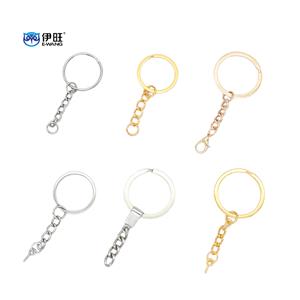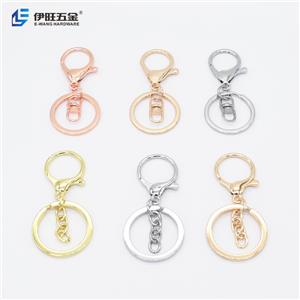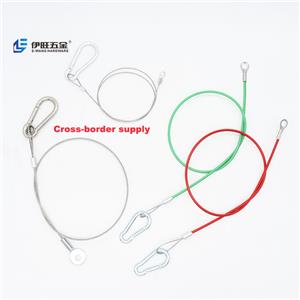The Ultimate Guide to Chicago Screws for Bookbinding
# **The Ultimate Guide to Chicago Screws for Bookbinding**
## **Introduction**
Bookbinding is an ancient craft that has evolved over centuries, incorporating various techniques and materials to create durable and aesthetically pleasing books. One essential component in modern bookbinding, especially for ledger books, journals, and custom notebooks, is the **Chicago screw** (also known as a **binding post**, **screw post**, or **book screw**).
This comprehensive guide explores everything you need to know about Chicago screws, including their history, types, applications, advantages, and how to use them effectively in bookbinding projects.

## **What Are Chicago Screws?**
Chicago screws are fasteners consisting of two parts:
1. **A male threaded post**
2. **A female threaded receptacle**
When screwed together, they securely bind sheets of paper, leather, or other materials without the need for glue or stitching. They are commonly made from brass, stainless steel, or nickel-plated metal for durability and corrosion resistance.
### **Key Features:**
- **Adjustable** – Can accommodate varying thicknesses of material.
- **Removable & Reusable** – Allows for adding or replacing pages.
- **Durable** – Provides a long-lasting binding solution.
- **Professional Finish** – Offers a clean, polished look.
## **History of Chicago Screws in Bookbinding**
The origin of Chicago screws is somewhat unclear, but they became popular in the late 19th and early 20th centuries, particularly in industrial and commercial applications. Their name likely comes from their widespread use in Chicago’s manufacturing and bookbinding industries.
Initially used for ledger books and accounting records, Chicago screws gained popularity due to their ability to:
- Securely hold thick stacks of paper.
- Allow easy page replacement (unlike glued or sewn bindings).
- Provide a professional, tamper-resistant binding.
Today, they are widely used in:
- Custom journals & notebooks
- Leather-bound books
- Photo albums
- Legal and financial documents
- Menu covers
- Artist sketchbooks

## **Types of Chicago Screws**
Chicago screws come in various sizes, materials, and finishes to suit different binding needs.
### **1. By Material**
- **Brass** – Classic, corrosion-resistant, and aesthetically pleasing.
- **Stainless Steel** – Extremely durable and rust-proof.
- **Nickel-Plated** – Offers a shiny, polished look.
- **Black Oxide-Coated** – Provides a sleek, modern appearance.
### **2. By Size**
Chicago screws are measured by:
- **Post Length** (e.g., ¼", ½", ¾", 1")
- **Thread Diameter** (e.g., #2, #4, #6, #8)
| **Size (Diameter x Length)** | **Best For** |
|-----------------------------|-------------|
| #2 x ¼" | Thin notebooks, small booklets |
| #4 x ½" | Standard journals, photo albums |
| #6 x ¾" | Thick ledgers, leather bindings |
| #8 x 1" | Heavy-duty books, legal documents |
### **3. By Head Style**
- **Flat Head** – Sits flush with the surface.
- **Dome Head** – Rounded for a decorative finish.
- **Countersunk Head** – Designed to be embedded into the material.
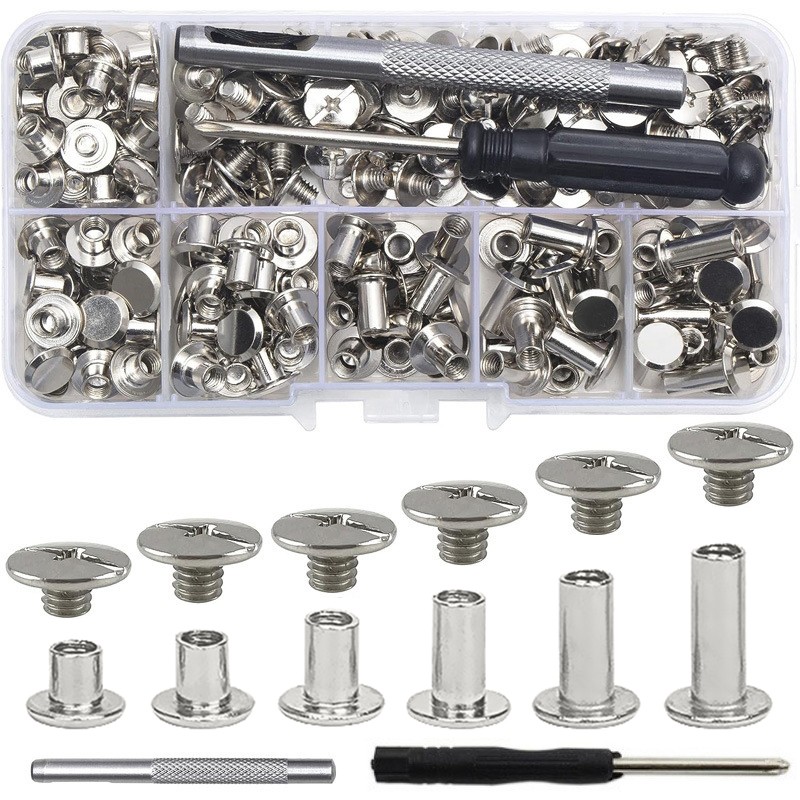
## **Advantages of Using Chicago Screws in Bookbinding**
### **1. Reusability & Customization**
Unlike glued or sewn bindings, Chicago screws allow users to:
- Add or remove pages easily.
- Replace damaged sheets without rebinding the entire book.
### **2. Durability**
- Metal posts provide a stronger hold than plastic spirals or staples.
- Resistant to wear and tear, making them ideal for frequently used books.
### **3. Professional Appearance**
- Provides a clean, high-end look for custom notebooks and portfolios.
- Available in polished finishes for a premium aesthetic.
### **4. Versatility**
- Works with paper, leather, wood, and synthetic materials.
- Suitable for both thin notebooks and thick ledgers.
### **5. Security**
- Tamper-resistant (unlike ring binders or spiral coils).
- Ideal for legal documents and official records.
## **How to Use Chicago Screws for Bookbinding**
### **Tools Needed:**
- Chicago screws
- Hole punch (or drill for thicker materials)
- Awl (for precise hole alignment)
- Screwdriver (optional, for tightening)

### **Step-by-Step Process:**
1. **Prepare the Pages & Cover**
- Stack the pages and cover material evenly.
- Mark hole positions (typically 2-4 screws depending on book size).
2. **Punch Holes**
- Use a hole punch for paper or a drill for leather/wood.
- Ensure holes align perfectly to prevent misalignment.
3. **Insert the Screws**
- Place the male post through the holes from one side.
- Screw the female receptacle onto the post from the opposite side.
4. **Tighten Securely**
- Hand-tighten first, then use pliers or a screwdriver if needed.
- Avoid over-tightening to prevent material damage.
5. **Final Check**
- Ensure all pages turn smoothly.
- Adjust tightness if necessary.
## **Applications of Chicago Screws Beyond Bookbinding**
While primarily used in bookbinding, Chicago screws are also popular in:
- **Leatherworking** (wallets, belts, bags)
- **Metal Fabrication** (nameplates, signage)
- **DIY Crafts** (scrapbooks, photo frames)
- **Industrial Uses** (securing panels, machinery parts)
## **Where to Buy Chicago Screws**
Chicago screws are available from:
- **Specialty Bookbinding Suppliers** (Hollander’s, Talas)
- **Hardware Stores** (Home Depot, Lowe’s)
- **Online Retailers** (Amazon, eBay, Etsy)
- **Craft Stores** (Michaels, Joann)
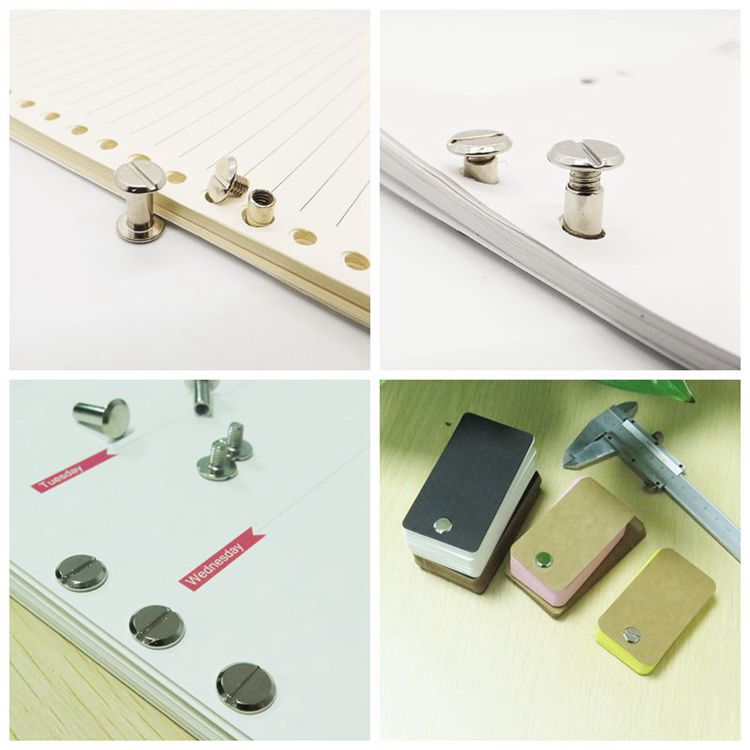
When purchasing, consider:
- **Material** (brass for aesthetics, stainless steel for durability).
- **Size** (ensure length matches your book thickness).
- **Finish** (polished, antique, or matte).
## **Conclusion**
Chicago screws are an excellent choice for bookbinding, offering durability, flexibility, and a professional finish. Whether you're creating custom journals, ledgers, or leather-bound books, these fasteners provide a secure and reusable binding solution.
By understanding the different types, sizes, and applications, you can choose the perfect Chicago screws for your project and achieve a high-quality, long-lasting bookbinding result.

